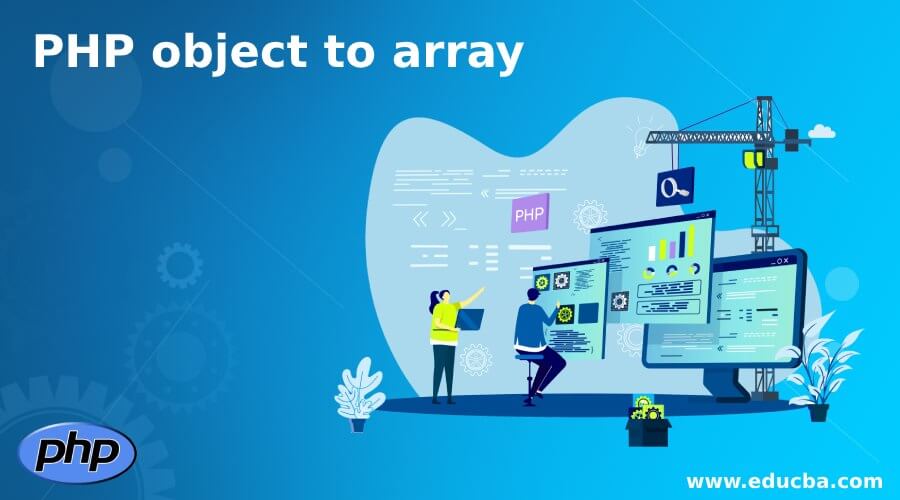PHP Object to Associative Array Conversion
Learn how to easily convert a PHP object into an associative array for convenient data manipulation and access in your PHP projects.
Learn how to easily convert a PHP object into an associative array for convenient data manipulation and access in your PHP projects.
In PHP, converting an object to an array can be achieved through various methods, each suited for different scenarios.
Typecasting: The simplest way is to typecast the object to an array:
$array = (array) $object;This works well for simple objects.
JSON Functions: If you're dealing with objects originating from JSON data:
$object = json_decode($jsonString); // Decode JSON string to object
$array = json_decode($jsonString, true); // Decode JSON string directly to arrayManual Iteration: For more control or complex objects:
$array = [];
foreach ($object as $key => $value) {
$array[$key] = $value;
}Remember that these methods might not handle nested objects automatically. You might need to apply the conversion recursively for complex structures.
This PHP code demonstrates how to convert objects into arrays using three methods: typecasting, JSON functions, and manual iteration. It provides examples for each method and includes a recursive function to handle nested objects, ensuring that all object properties are correctly converted into array elements.
This script demonstrates different methods to convert objects to arrays in PHP.
<?php
// Sample object
$object = new stdClass();
$object->name = "John Doe";
$object->age = 30;
$object->city = "New York";
// 1. Typecasting
$arrayTypecast = (array) $object;
echo "Typecasting:\n";
print_r($arrayTypecast);
// 2. JSON Functions
$jsonString = json_encode($object);
$arrayJsonDecode = json_decode($jsonString, true);
echo "\nJSON Functions:\n";
print_r($arrayJsonDecode);
// 3. Manual Iteration
$arrayManual = [];
foreach ($object as $key => $value) {
$arrayManual[$key] = $value;
}
echo "\nManual Iteration:\n";
print_r($arrayManual);
// Example with nested object
$object->address = new stdClass();
$object->address->street = "123 Main St";
$object->address->zip = "10001";
// Recursive function for handling nested objects
function objectToArrayRecursive($object) {
$array = [];
foreach ($object as $key => $value) {
if (is_object($value)) {
$array[$key] = objectToArrayRecursive($value);
} else {
$array[$key] = $value;
}
}
return $array;
}
$arrayRecursive = objectToArrayRecursive($object);
echo "\nRecursive Conversion for Nested Objects:\n";
print_r($arrayRecursive);
?>This code demonstrates the three methods mentioned in the article:
Additionally, it includes an example of handling nested objects using a recursive function. This function checks if a property is an object and recursively calls itself to convert nested objects into arrays.
get_object_vars() can also be used to retrieve an object's properties as an associative array.json_last_error() to ensure the encoding/decoding process was successful.This document outlines three primary methods for converting objects into arrays in PHP:
| Method | Description
Choosing the most effective method for converting objects to arrays in PHP depends on the specific context. While typecasting offers simplicity for straightforward objects, JSON functions prove valuable when handling JSON data. For intricate objects or customized mapping, manual iteration provides optimal control. When dealing with nested objects, a recursive approach is essential. Ultimately, selecting the appropriate method ensures efficient and accurate object-to-array conversion in PHP, catering to diverse programming needs.
 Convert an object to associative array in PHP - GeeksforGeeks | A Computer Science portal for geeks. It contains well written, well thought and well explained computer science and programming articles, quizzes and practice/competitive programming/company interview Questions.
Convert an object to associative array in PHP - GeeksforGeeks | A Computer Science portal for geeks. It contains well written, well thought and well explained computer science and programming articles, quizzes and practice/competitive programming/company interview Questions. How To Convert A Php Object To An Associative Array | Learn how to easily convert a PHP object to an associative array using simple code snippets for efficient data manipulation.
How To Convert A Php Object To An Associative Array | Learn how to easily convert a PHP object to an associative array using simple code snippets for efficient data manipulation. How to Convert object to array in PHP with example? | Guide to PHP object to array. Here we discuss the introduction, methods, how to convert object to array in PHP? and examples respectively.
How to Convert object to array in PHP with example? | Guide to PHP object to array. Here we discuss the introduction, methods, how to convert object to array in PHP? and examples respectively. json_decode - Manual - PHP | PHP is a popular general-purpose scripting language that powers everything from your blog to the most popular websites in the world.
json_decode - Manual - PHP | PHP is a popular general-purpose scripting language that powers everything from your blog to the most popular websites in the world. Arrays - Manual - PHP | PHP is a popular general-purpose scripting language that powers everything from your blog to the most popular websites in the world.
Arrays - Manual - PHP | PHP is a popular general-purpose scripting language that powers everything from your blog to the most popular websites in the world. How to parse associative array - PHP | Tek-Tips | I have a json_decoded string passed by AJAX array in the format :
How to parse associative array - PHP | Tek-Tips | I have a json_decoded string passed by AJAX array in the format :Array ( [dta] => [ { "a" : 1, "b" : "string" , "c" : ""}, { "a" : 8, "b" : "string 2" , "c" : "12/12/2022"} ] [vars] => [ 7, 12 ] )
The items pointed to by dta need to be looped through...
 Objects - Manual - PHP | PHP is a popular general-purpose scripting language that powers everything from your blog to the most popular websites in the world.
Objects - Manual - PHP | PHP is a popular general-purpose scripting language that powers everything from your blog to the most popular websites in the world.